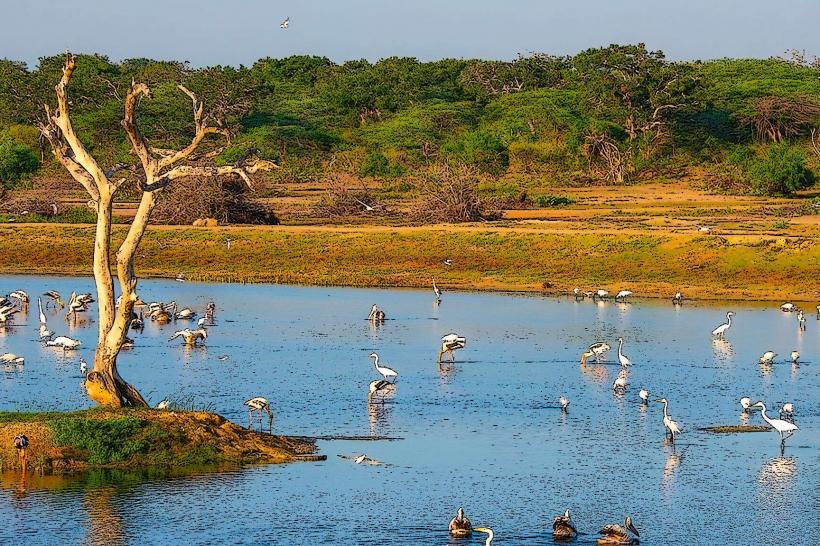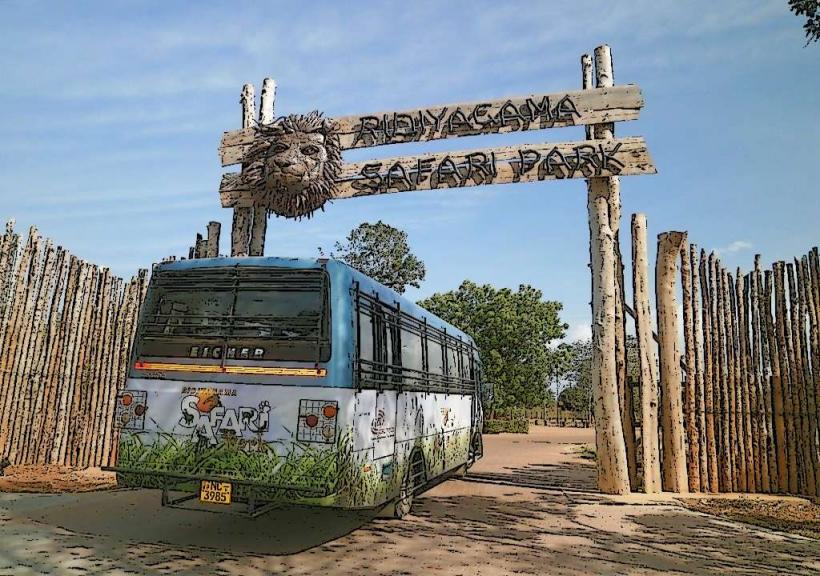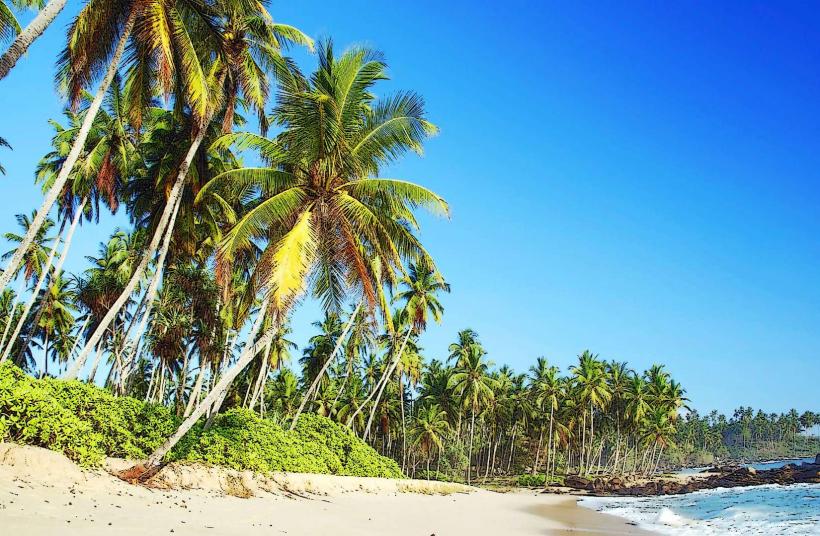Information
Landmark: Yala National ParkCity: Hambantota
Country: Sri Lanka
Continent: Asia
Yala National Park, Hambantota, Sri Lanka, Asia
Overview
In Sri Lanka’s southeast, Yala National Park draws more visitors than almost any other, its dusty trails winding past watering holes where elephants linger, moreover famed for its rich variety of wildlife-especially the sleek, golden-spotted leopards-it plays a vital role in safeguarding Sri Lanka’s natural heritage.Yala draws wildlife lovers from around the world and dazzles them with its beauty-from wide golden grasslands to shadowy forests, still wetlands, and the salty air of its rugged coastline, consequently number one.Yala National Park sits in Sri Lanka’s Southern Province, about 300 kilometers southeast of Colombo, where dry winds carry the scent of sun-baked grass, on top of that yala sits just a short drive from Tissamaharama and Hambantota, stretching across 979 square kilometers (378 square miles) of wild terrain, making it Sri Lanka’s second-largest national park.The park is split into several blocks, and Block I draws the most visitors for safaris, where jeeps kick up red dust along winding tracks, consequently yala became a national park in 1938 and has been central to Sri Lanka’s drive to protect its rich biodiversity ever since.It’s also recognized as a Biosphere Reserve and a Ramsar Wetland for its rich ecology, with landscapes that shift from sun-baked dry forests to tangled scrub, open grasslands, and glistening wetlands alive with birds, likewise the park’s shifting landscapes-tropical dry evergreen forests, thorny scrub, and lush riverbanks-nurture everything from mango and palmyra palms to acacias and hardy, sun-bleached shrubs, while its wildlife ranges from the elusive Sri Lankan leopard to countless other creatures you might glimpse in the rustle of tall grass.Sri Lankan Leopard (Panthera pardus kotiya): Yala ranks among the top spots on Earth to glimpse the shy Sri Lankan leopard, a sub-species of the Asian leopard, often seen slipping like shadow through the tall grass, not only that yala has one of the world’s highest concentrations of leopards, drawing wildlife photographers and safari lovers from around the globe.Alongside these elusive cats, you might spot Asian elephants grazing in sunlit grasslands, a shy Sri Lankan sloth bear, cinnamon bear, wild boar, spotted deer, sambar, gray langurs, or a quick-moving mongoose, in conjunction with birdwatchers flock here too-more than 200 species fill the park’s skies and trees, from year-round residents to colorful migratory visitors.Yala National Park is alive with remarkable wildlife-view for the dazzling Indian Peafowl, Sri Lanka’s national bird, along with painted storks, spot-billed pelicans, crested hawk-eagles, cuckoos, hornbills, and quick-darting kingfishers, simultaneously you might also glimpse monitor lizards sunning on warm rocks, mugger crocodiles lying still in the shallows, or a king cobra sliding through the undergrowth.Along the coast, Olive Ridley and green sea turtles nest in the sand under the moonlight, alternatively the park’s biggest draw is a jeep safari, where you can rumble across open plains, weave through forest tracks, and catch sight of animals in their own wild rhythms.You can join a guided safari, where seasoned naturalists or park rangers ride along, pointing out everything from tiny orchids to the rustle of a hornbill’s wings, at the same time yala’s real claim to fame, though, is its unusually large leopard population.If you’re on safari, you’ve got a good chance of spotting leopards-especially in the cool light of early morning or as the sun dips low, when they’re on the move, while elephants often appear too, lumbering through open grasslands or splashing at quiet waterholes.Yala teems with elephants, and it’s not unusual to spot a gentle giant flapping its ears during a safari, consequently birdwatchers pour in between November and April, when flashes of glowing wings mark the arrival of travelers from as far as Europe and Asia.Believe it or not, In certain areas, local guides lead nature walks and treks, pointing out hidden orchids and tracing the tracks of wild deer, alternatively it’s a wonderful way to discover the park’s wildflowers and tiny creatures up close.Down by the coast, Yala’s untouched beaches invite you to stretch out in the sun or quietly watch sea turtles nest under the moonlight, in conjunction with from the beaches, you can take in sweeping views of the deep blue Indian Ocean, a striking contrast to the park’s varied ecosystems.The prime time to visit Yala is the dry season, February through June, when animals gather at shrinking waterholes and are far easier to spot, meanwhile most days are sunny and warm, and rain rarely disrupts the park.From October to January, though, the monsoon sweeps in with steady showers, turning some trails into muddy, slippery paths, consequently even in the wet season, it’s a great time to watch for migratory birds gliding in, while the dry months make leopard sightings more likely as the large cats linger in open ground near watering holes; for places to stay, you’ll find plenty of options in nearby towns like Tissamaharama, Kirinda, and Hambantota.You’ll find everything from luxury resorts to eco-lodges and guesthouses for every budget, plus a few rustic campsites and eco-lodges right by the park for a deeper dive into nature; nearby restaurants and lodges serve fragrant plates of rice and curry, fresh seafood, and local snacks, and you can reach Yala by car or jeep from Tissamaharama, the closest town, as well as you can reach the park’s entrance by taxi or other private transport, while public buses run to Tissamaharama from Colombo and Galle.Still, a hired vehicle makes the trip smoother and gives you more time to enjoy the sights, at the same time inside the park, safaris rumble along in jeeps or sturdy 4x4s, their tires kicking up warm red dust.If you’re planning a safari, book early-especially in peak season-since only a handful of vehicles can enter the park at once, moreover yala National Park, with its rustling grasslands and roaming leopards, is a must-discover for wildlife lovers and nature enthusiasts.The park bursts with life-dense forests, spotted leopards slipping through the shadows, and an astonishing range of plants and animals-making every visit unforgettable, in addition whether you’re chasing the thrill of a safari, watching a flash of color as a rare bird takes flight, or wandering through its breathtaking scenery, Yala stands among Sri Lanka’s top wildlife parks-a region where nature feels close enough to touch.
Author: Tourist Landmarks
Date: 2025-09-12




